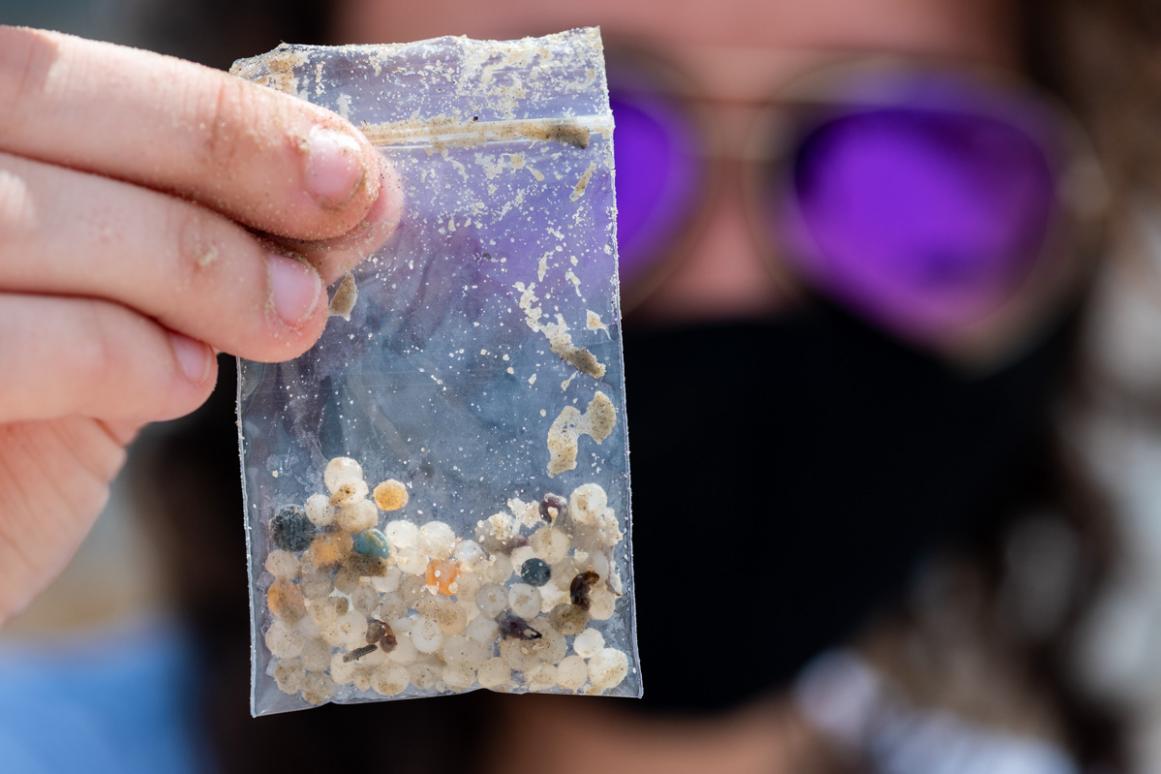Nurdle Patrol Kits Allow Citizen Scientists in the U.S., Mexico and Cuba to Collect Valuable Plastic Pollution Data

Nurdles are tiny plastic pellets that are comprised of the raw material used in manufacturing plastic products. Though small, nurdles are washing up on beaches, riverbanks, and lake shores by the millions. Despite being what is referred to as microplastics or micro-trash, nurdles can have a big impact on ecosystems, existing in an environment for hundreds of years and absorbing hazardous chemicals. Once in the environment, nurdles pose a threat to shorebirds, turtles, various species of fish, and any other wildlife that happen to eat them.
In November of 2018, Jace Tunnell, Director of the Mission-Aransas National Estuarine Research Reserve in Port Aransas, after what started as his daughter’s science project, decided to launch Nurdle Patrol. The citizen science project brings together scientists, landowners, policymakers, and the public to help clean up and report nurdles throughout the Gulf of Mexico and beyond.
Tunnell says that the effort originally began as a Facebook group, inviting residents along Mustang and North Padre Islands to start looking for nurdles on their own.
“The methodology is really simple,” Tunnell says. “You just explore a small section of beach for a minimum of 10 minutes and collect and take note of how many nurdles you find.”
After collecting the nurdles, the citizen scientist can input the data into a “Nurdle Report” form on the Nurdle Patrol website or the Nurdle Patrol app. Tunnell says that the nurdles, which are often multicolored, can either be kept in a jar as a keepsake, or simply thrown away properly.
While any individual can look for nurdles and submit a report, Nurdle Patrol also produces kits that are made especially for teachers and larger organizations, complete with bottles for collection, stickers, and other swag, along with a USB drive filled with training videos on how to collect and report nurdles, articles about nurdle contamination, and presentations for teachers to deliver to their students, among other things. The kit’s materials come in English and Spanish.
“We’ve been working to convert the app to Spanish and we also hosted a plastic pollution symposium in Veracruz, Mexico in September of 2022,” Tunnell says. “We want to find out where the hot spots are in Mexico and our partners at the University of Veracruz are helping to lead that effort.”
Recently, Dr. Mark Besonen, Director of International Programs at the Harte Research Institute for Gulf of Mexico Studies (HRI) at Texas A&M University-Corpus Christi, took five Nurdle Patrol kits to HRI partners in Cuba including Acuario Nacional de Cuba, Centro de Investigaciones Marinas at the University of Havana, Centro de Estudios Ambientales de Cienfuegos, and Parque Nacional Guanahacabibes.
“Jace has interacted a lot with Mexico, but Cuba also borders the Gulf, and it is harder to get involved there,” Besonen said. “When we went to Cuba in November, I said to Jace, ‘let’s do this,’ and he gave me five Nurdle Patrol kits to pass on to our partners there.”
Besonen says that partner groups in Cuba were enthusiastic about getting started with the kits, and they often carry out a lot of educational outreach programming, especially the Acuario Nacional de Cuba. Because Nurdle Patrol is low cost and can be done without a lot of training, it’s a perfect fit for citizen science throughout the Gulf.
Today when looking at the Nurdle Patrol website, Cuba is now on the map as three volunteers recently collected nurdles in early December 2022 at the Tetas de Tomasa beach, Cienfuegos Bay.
Tunnell says that with the help of funding from the National Oceanic and Atmospheric Administration he hopes to keep growing Nurdle Patrol and that a bill will eventually reach, and pass, the Texas legislature to prevent more plastic pollution from reaching Texas shores and waterways.
Those interested in learning more about Nurdle Patrol and getting involved can visit their website or watch the nurdle playlist of videos on the Mission-Aransas Reserve’s YouTube channel.
